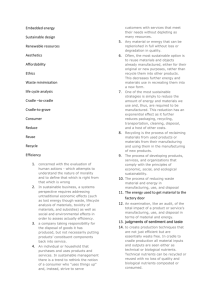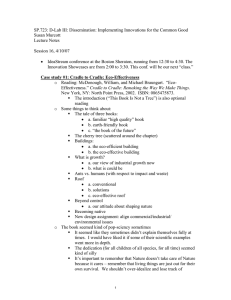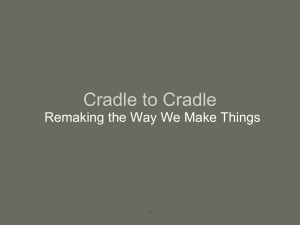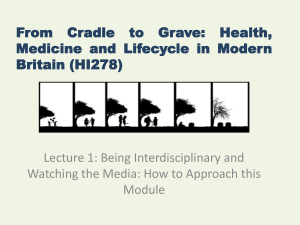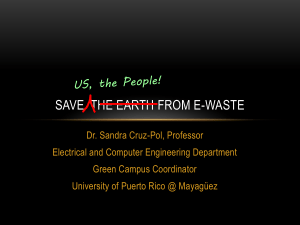Objective: STUFF and waste
advertisement
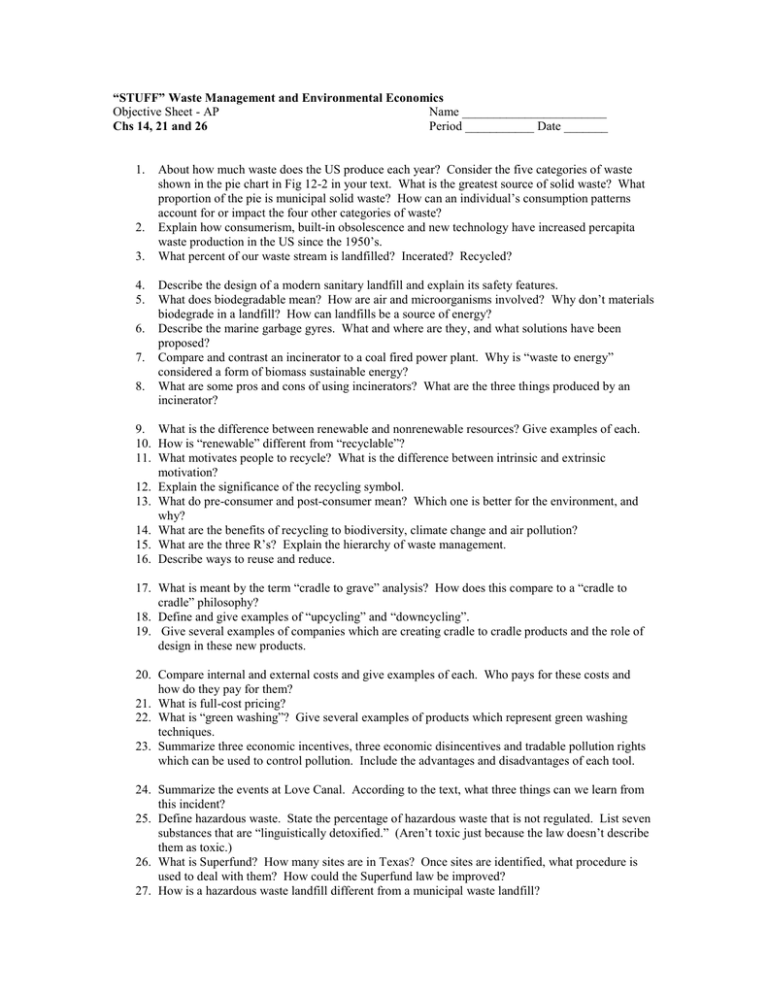
“STUFF” Waste Management and Environmental Economics Objective Sheet - AP Name _______________________ Chs 14, 21 and 26 Period ___________ Date _______ 1. 2. 3. 4. 5. 6. 7. 8. About how much waste does the US produce each year? Consider the five categories of waste shown in the pie chart in Fig 12-2 in your text. What is the greatest source of solid waste? What proportion of the pie is municipal solid waste? How can an individual’s consumption patterns account for or impact the four other categories of waste? Explain how consumerism, built-in obsolescence and new technology have increased percapita waste production in the US since the 1950’s. What percent of our waste stream is landfilled? Incerated? Recycled? Describe the design of a modern sanitary landfill and explain its safety features. What does biodegradable mean? How are air and microorganisms involved? Why don’t materials biodegrade in a landfill? How can landfills be a source of energy? Describe the marine garbage gyres. What and where are they, and what solutions have been proposed? Compare and contrast an incinerator to a coal fired power plant. Why is “waste to energy” considered a form of biomass sustainable energy? What are some pros and cons of using incinerators? What are the three things produced by an incinerator? 9. What is the difference between renewable and nonrenewable resources? Give examples of each. 10. How is “renewable” different from “recyclable”? 11. What motivates people to recycle? What is the difference between intrinsic and extrinsic motivation? 12. Explain the significance of the recycling symbol. 13. What do pre-consumer and post-consumer mean? Which one is better for the environment, and why? 14. What are the benefits of recycling to biodiversity, climate change and air pollution? 15. What are the three R’s? Explain the hierarchy of waste management. 16. Describe ways to reuse and reduce. 17. What is meant by the term “cradle to grave” analysis? How does this compare to a “cradle to cradle” philosophy? 18. Define and give examples of “upcycling” and “downcycling”. 19. Give several examples of companies which are creating cradle to cradle products and the role of design in these new products. 20. Compare internal and external costs and give examples of each. Who pays for these costs and how do they pay for them? 21. What is full-cost pricing? 22. What is “green washing”? Give several examples of products which represent green washing techniques. 23. Summarize three economic incentives, three economic disincentives and tradable pollution rights which can be used to control pollution. Include the advantages and disadvantages of each tool. 24. Summarize the events at Love Canal. According to the text, what three things can we learn from this incident? 25. Define hazardous waste. State the percentage of hazardous waste that is not regulated. List seven substances that are “linguistically detoxified.” (Aren’t toxic just because the law doesn’t describe them as toxic.) 26. What is Superfund? How many sites are in Texas? Once sites are identified, what procedure is used to deal with them? How could the Superfund law be improved? 27. How is a hazardous waste landfill different from a municipal waste landfill? 28. What is RCRA? What is CERCLA? 29. What is a brownfield? 30. Compare bioremediation, mechanical remediation and phytoremediation. 31. What is e-waste and why should it be handled separately from MSW? What concerns are emerging about e-waste recycling? Friday Feb 27 Try it! Collect your recyclables for a week and take a photo of you recycling and post it on the HUB by March 27th. 80 for recycling at your home curbside. 90 for recycling at WHS or another school. 100 for finding a drop off site other than a school! Unit intro – how did we get here? HW – Read Cradle to Cradle chapter and answer questions in best AP writing. Due Feb 4/5. Mon March 2 Notes – Landfill and incinerator comparison Tues March 3 Wednesday March 4/Th March 5 Friday March 6 Quiz: Obj #1-8 Notes: the 3 R’s Cradle to Cradle assignment due (double daily grade) Notes: Superfund sites and Hazardous Wastes HW – Cradle to Cradle reading due Wed/Th (double daily grade); study for quiz tomorrow HW: Cradle to Cradle reading due Wed/Th (double daily grade)’ Notes: Internal vs. External costs Mon March 9 Tuesday Mar 10 Wednesday Mar 11/Th Mar 12 Notes: Brownfields and hazardous wastes Re view day HW – Complete Zaption “Story of Stuff: Electronics” on HUB by Monday TEST: STUFF unit Spring break!!! Eat Well, Sleep Much, Play often!!!! Photo of you recycling due Tues March 31st to Edmodo group!
